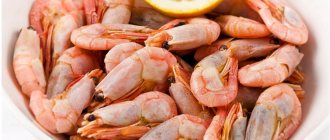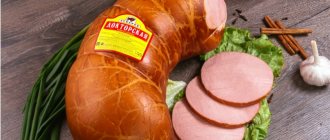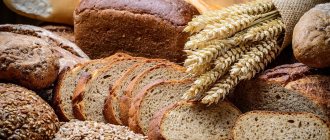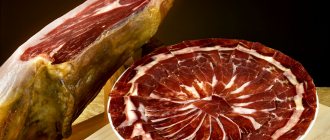About thirty years ago it was quite difficult to find food in stores. It was not possible to buy everything and not always. Times were difficult, so our grandparents, mothers and fathers had to somehow get out of the current situation. Home canning was popularized during Soviet times. But even now, when you can buy vegetables and fruits, including exotic ones, in the supermarket at any time of the year, housewives continue to preserve the gifts of the garden. Why? After all, the need to stock up for the winter has long ceased? Because it's delicious! And this is the main argument in favor of homemade preparations.
However, it is not enough to simply preserve rosy tomatoes, crispy cucumbers and amazingly aromatic berry jams. You need to learn how to store them correctly. Otherwise, all your work will go to waste. Today we will talk about where it is best to store jars of provisions and how long you can do this.
You didn't know this: how long can preserves made at home be stored?
With the onset of summer, housewives have a logical question: how long can preserves be stored? After all, there are last year’s “sunsets” left in the cellar, which are a pity to throw away. On average, the shelf life of salted and pickled vegetables, as well as fruits and berries stored for the winter is 1–2 years, but there are some nuances that we will discuss below.
Tomatoes and cucumbers
It is generally accepted that pickled and pickled cucumbers, as well as tomatoes, retain their taste and remain safe for health for 2 years. However, it is advisable to eat them in the first year if:
Canned tomatoes and cucumbers that are pressure sterilized in an autoclave can be stored for 3-4 years.
How to choose canned tomatoes in the store
For those who buy canned vegetables, you need to know that the law “more expensive means better quality” does not apply here. How to choose salted tomatoes in the store. There are various cans on the shelves with a wide range of prices, and it is not clear which product is better among them. The first thing you should pay attention to is the brine. If it is cloudy, then it is better to put this jar aside. Also, the lid of the jar should not be swollen; if so, then the expiration date has already passed, or the preservation went wrong somehow. The next thing you should pay attention to is the fruits themselves; they should not be cracked. The more cracks, the lower quality the tomatoes.
As a rule, both home-canned and homemade tomatoes have the same shelf life. The shelf life of canned tomatoes is from 1 to 2 years.
Zucchini and eggplant caviar
Squash or eggplant caviar prepared with the addition of table, apple or balsamic vinegar is suitable for consumption for 2–3 years from the date of production, if it has been in a cool room all this time. It is advisable to keep it at room temperature for no longer than 2 years.
Squash caviar with mayonnaise can be stored for only 1 year. Exactly the same shelf life for any unsterilized caviar, provided that it is kept in the refrigerator or cellar.
How long does an open can of tomatoes last?
An open can of salted tomatoes will not last long. You can eat them until mold appears on the surface of the brine. In a warm place it appears much earlier and the shelf life of opened tomatoes at room temperature is no more than a week. In the refrigerator, such a jar can last from 2 to 3 weeks.
For those who buy canned vegetables, you need to know that the law “more expensive means better quality” does not apply here. How to choose salted tomatoes in the store. There are various cans on the shelves with a wide range of prices, and it is not clear which product is better among them. The first thing you should pay attention to is the brine. If it is cloudy, then it is better to put this jar aside. Also, the lid of the jar should not be swollen; if so, then the expiration date has already passed, or the preservation went wrong somehow. The next thing you should pay attention to is the fruits themselves; they should not be cracked. The more cracks, the lower quality the tomatoes.
The dacha epic, which began in the late Soviet Union, turned out to be not an immediate hit. Today, the number of families with dacha plots is much higher and continues to increase. And many of them grow vegetables and fruits in order to provide their families with products grown with their own hands, which obviously do not contain nitrates and other chemicals that stores stuff us with.
Compotes
The more sugar is added to the compote, the longer it will retain all its qualities. However, the shelf life of such preservation also depends on other factors. For example, the presence of seeds in fruits, the method of heat treatment and the method of capping.
Compote prepared in accordance with the recipe is suitable for drinking for 2 years, with the exception of:
Video tips for setting up a balcony cellar
Balcony cabinet updates:
Insulated and spacious wardrobe:
Review of a homemade heating cabinet:
As you can see, even in a city apartment you can find a suitable place to store numerous pieces and twists that you have prepared yourself. It remains to decide which design is more suitable for your balcony, because the choice is really wide: from stylish custom-made cabinet models to convenient, self-made storage boxes and shelves.
YOU MAY ALSO BE INTERESTED
Jam
Low-moisture jam (well boiled) containing at least 50% sugar remains edible for 5 years.
Liquid jams, as well as those made with minimal addition of sugar, can be stored for no more than a year.
Don’t risk your health, as well as the health of your loved ones - throw away “rolls” that were stored incorrectly or were made a long time ago, even if the contents of the jars seem edible and the lids are not swollen.
Source
How long and under what conditions are various types of canned food stored?
Although canned foods are not recommended to be consumed daily, they are simply irreplaceable when camping or at the dacha. A couple of metal or glass jars can help you out when guests unexpectedly visit or you don’t have enough time to prepare dinner. To prevent your home strategic stock from becoming unusable, you need to know how long canned food is stored, how to choose the right canned products, and under what conditions to store sealed and opened containers. You will find out the answers to these questions by reading the article.
Shelf life of canned food
Although some sources claim that canned foods will not spoil even in a hundred years, such information is very doubtful. Manufacturers often add approved preservatives for better preservation, but the shelf life of canned food still has certain limits.
To extend shelf life, tin cans are treated with special compounds inside and outside:
The slightest violation of the tightness leads to infection with microflora, which will certainly cause the product to deteriorate. Therefore, manufacturers indicate on the packaging a period during which it is guaranteed not to undergo corrosion or depressurization.
Now let’s look at certain types of canned foods.
Canned meat, stew
Long-term canned goods include canned meat and stewed meat. If you follow the storage conditions specified by the manufacturer, the contents of the containers will be suitable for consumption for 3-5 years:
The stew should contain only meat, fat and spices. Products containing additional additives (preservatives, soy, cereals, stabilizers) do not qualify as canned meat. The name of such canned food most often begins not with the type of meat, but with the word “stew.” It can be stored for no more than three years.
If the fat in the purchased stew does not solidify even in the refrigerator, this is counterfeit.
Canned fish
In terms of nutritional value and usefulness, canned fish is almost as good as fresh fish, especially in calcium content. After all, all the parts of the skeleton that we usually throw away become so soft in canned fish that the flesh is eaten along with the bones.
Some time after canning, the fish begins to undergo aging, i.e., gradually lose its beneficial qualities. Regardless of the composition of the sauce, aging of canned fish occurs faster than meat; the shelf life of canned fish does not exceed two years.
Do not confuse canned fish and preserves. Preserves are prepared without heat treatment; their preservation is ensured by preservatives.
Canned vegetables
To seal canned vegetables, manufacturers use glass or metal containers with a layer of varnish or enamel applied on the inside. This precaution is due to the high content of organic acids in vegetables - they actively interact with metal.
Such products have storage regulations, which depend on the processing method, type of container, type of content:
Fruit and berry
The same rules apply to canned fruits and berries as to vegetables. The only exceptions are compotes made from stone fruits (cherry, apricot, peach, cherry plum and others).
The seeds contain the glycoside amygdalin, which breaks down to release hydrocyanic acid, a powerful poison. That is why seeds are removed from fruits during production, and products of this kind are stored for no more than 12 months. Violation of the temperature regime leads to darkening of the fruits or sugaring of the syrup.
Baby food
Canned foods for first feeding are prepared without the use of preservatives and salt, which significantly reduces their shelf life. Manufacturers guarantee that juices, vegetable and fruit purees will not harm the health of the baby for 12 months. The shelf life of canned meat for baby food does not exceed two years.
Which varieties last the longest?
Each variety remains suitable for consumption for a different period of time. Experts note that fruits grown in open soil last longer than those grown in soil.
Tomatoes of late and mid-late ripening periods are stored longer.
Durable varieties for long-term storage:
Experts have specially developed varieties that allow long-term storage. What to do when your favorite variety does not belong to these categories? The answer is simple: use tricks to extend the time and keep vegetables fresh and beautiful.
Deciphering the markings on the jar
If the label is lost, you can recognize the contents of the can using the markings. How can you determine the shelf life of canned food? They are part of the markings applied to the lid in 2 or 3 rows. It contains the following information:
Foreign-made canned goods are labeled differently; manufacturers indicate the date by which the contents of the container must be consumed. You can often see two dates on the lid - production and expiration date.
Canning Frequently Asked Questions
I have selected frequently asked questions regarding the topic of food preservation. I will analyze 10 questions and answer them as briefly as possible. For those who want to dive deeper into the topic, I will attach several articles for study.
In the article I will talk about sterilization, those very twists for the winter. I won’t go into freezing, smoking and other topics; they have their own characteristics.
1. What are the ways to preserve food?
Learn methods for preserving food for long-term storage:
2. About natural preservatives.
Without preservatives, not a single twist will last even a day. For homemade preparations, natural ones are used. Their job is to prevent or slow down the development of harmful bacteria, prevent spoilage, and preserve food longer.
List of natural preservatives for preparations:
3. How long can different types of preparations be stored?
Shelf life of preparations:
Of course, such shelf life takes into account the fact that you will check them for spoilage and comply with storage conditions.
4. What canned foods can be stored at room temperature?
Everything except mushrooms can be stored up to 25 degrees without exposure to sunlight. It is better to store them in the cold 6-8 degrees.
5. How to achieve complete sterility of workpieces?
Complete sterility under standard “production” conditions cannot be achieved without an autoclave. When prepared at home, the sterilization temperature reaches 100 degrees, which is not enough to kill heat-resistant bacteria. They can be found even on jars that are well sterilized over steam or in the product itself.
The main and most dangerous example is botulism in canned food. They can withstand up to 120 degrees. The autoclave cooks at temperatures above 100°C, which no bacteria can withstand. The demand for an autoclave has grown significantly in recent years, I advise you to try it too.
6. The jar/lids exploded. Why? What to do next?
A common problem is bloating of lids and bursting of cans of canned food. Reasons for sterilization without using an autoclave:
In a separate article, I already talked about the reasons for the bloating and tearing of lids during autoclaving. I advise you to read it.
7. Why turn over and cover jars after sterilization?
The jars are carefully turned over to check for leaks and “self-sterilization.” By turning the jar over, they find out whether the lid is leaking and immediately save the workpiece. Also, due to the hot product, the lid is additionally subjected to heat treatment. Covering the cans in a warm blanket or blanket gives the “Thermos” effect. Canned food retains heat longer and cools more slowly. Exposure to heat lasts longer - additional sterilization.
Also, due to uniform slow cooling, the risk of cans exploding is reduced, and the pressure drops slowly. In an autoclave, the jars are not turned over, but allowed to cool completely in the apparatus to avoid overpressure.
8. How to determine that the workpiece is damaged?
Signs of damage visible to the eye and nose:
Even one sign indicates damage to the twist. Throw it away immediately! I often see on forums that they remove mold or digest spoiled cucumbers. It's not worth it. Mold lies not only on the surface, it releases its spores deep into the product. Superficial cleaning is not enough here. And don’t forget about botulism, it won’t disappear after cooking.
9. How to properly sterilize jars?
Cans are sterilized at home either with temperature and steam, or with chemicals, or without sterilization if the canned food is prepared in an autoclave.
10. Time and temperature of sterilization of different products.
I suggest looking at the table without any special descriptions.
Source
How to store at home: terms and conditions
The optimal storage conditions for canned products are a temperature of 3-8 °C and a relative humidity not higher than 75%. Glass containers should be protected from direct sunlight. Storage conditions for open and closed containers are very different.
We recommend reading:
Closed jars
Thrifty housewives often wonder in what conditions canned food should be stored. Closed industrial containers must be stored in accordance with the requirements specified by the manufacturer. The shelf life of closed cans was discussed above.
Even Russia's strategic stockpile is constantly subject to rotation - products with expiring dates are used first. At home, this rule also applies.
Opened cans
A few helpful tips will help you avoid becoming a victim of canned food poisoning after opening it:
Balcony furniture for conservation storage
The most successful way to save limited space is to use shelves, racks and cabinets for storing preserved food on the balcony. Let's consider options that are convenient to use and suitable for a harmonious interior arrangement.
Racks and shelves
Horizontal surfaces located at a convenient height are considered the most suitable place for placing numerous jars with winter preparations. They can take the form of open and closed shelves suspended from the walls, or racks that occupy all the free space.
Even one small shelf can accommodate a dozen cans
However, not every shelf is suitable, because jars filled with liquid and food have considerable weight. Therefore, conservation shelves on the balcony should have the following characteristics:
- durable, processed material;
- high-quality metal fasteners (plastic will not work);
- sufficient length and width;
- a suitable height for comfortable use (approximately from 0.6 m to 1.7 m).
It is better to select the maximum width so that 2-3 rows of cans can freely fit on the surface, but keep in mind: the larger the width of the shelf, the stronger the fastenings should be.
Where should the shelves be installed? On typical balconies, the entire front side is occupied by double-glazed windows, the back wall is occupied by a window and an entrance door, and two end walls remain. They are suitable for hanging shelves, provided that the wall is strong. Loggias with concrete and brick walls benefit. However, if, when insulating a balcony, you foresee the installation of shelves or built-in cabinets in advance, then with other options there will be no problems with creating a mini-warehouse.
Shelves made during thermal insulation and wood lath paneling
To save space, which is usually not enough, it is important to correctly consider the height of the shelves. Think about the types of jars you typically use and adjust the space between shelves to accommodate them. Don’t forget that a distance of 10-15 cm above the jars will allow you to quickly find the canned food you need and carefully move the containers apart to get what you need.
Simple ways to create a convenient pantry with shelves:
- process wooden boards yourself (chipboards, MDF, plywood are also suitable), put together shelves and hang them from the walls;
- buy a ready-made wooden or metal rack according to the size of the balcony;
- organize storage during the process of sheathing and insulation;
- make universal decorative shelves and, if necessary, use them to store workpieces.
Advice! Canned food should not be placed in the light, so for long-term storage of canned food, be sure to equip all shelves with doors.
Option for self-production - wooden shelves on a metal profile
All recommendations related to shelves are also addressed to the installation of shelving. A rack is necessary when there are a lot of cans with blanks. Then both end walls are equipped with shelves located along the entire height. Of course, to get items from the lower shelves, you will have to bend down, and climb a bench or ladder to get items from the upper shelves, but the delicious twists for borscht or roast are worth it.
Wardrobes and chests of drawers
A large canning cabinet on the balcony is considered a more complex structure than shelves, but also more suitable, since all its contents are closed with tight doors and do not allow ultraviolet radiation, which is harmful to canned food, to pass through.
Neat full-height wardrobe with sliding doors
As with shelves, end walls are usually chosen for cabinets. In this case, the furniture performs its functions without blocking the passage or blocking the double-glazed windows.
Advice! We do not recommend using old wardrobe furniture as cabinets for workpieces - it is not suitable in design and arrangement of shelves.
If you think that grandma’s old wardrobe can turn into a pantry, then you are mistaken, because for comfortable use it needs high-quality improvements. It is convenient to store glass jars for canning exclusively on long shelves of small width, which are not found in wardrobes. On the contrary, they have deep and too high sections for cans and a compartment for outerwear, which is absolutely unsuitable.
Pull-out containers are a good option not only for storing fresh vegetables, but also for arranging containers with pickles
If the area of the loggia allows, then the cabinets can be installed along the wall shared with the adjacent room. The main condition is the presence of sufficient space for free movement and opening of doors, as well as reliable installation. To prevent the cabinet from wobbling or tilting under the load of a large number of pickles and preserves, the back wall along the entire perimeter must be fixed to the wall, and strong fasteners are used to install the shelves.
When constructing a cabinet, you can use different types of doors:
- traditional swing doors - with sufficient free space;
- sliding – if space is limited;
- blinds or roller shutters - a lightweight option;
- curtains on a rope or crossbar - to style the interior.
A good option for a balcony is a wardrobe with both doors moving along guides to the left and right. With this design, it is impossible to examine all the blanks at the same time, but the cabinet itself looks neat and stylish.
The original diagonal arrangement of the panel with doors, increasing the internal volume
If there are not so many preparations, and residents are attracted by a more spacious area, you can limit yourself to a small chest of drawers (or a pair of chests of drawers), arranged like a closet. The shelves are located under the tabletop, which, in turn, can be used for growing indoor or garden plants (or for other purposes).
Secret places
If you don’t consider yourself an adherent of conservation, but always have a few jars of marinade or pickles as gifts or purchased for the occasion, you don’t have to clutter the refrigerator with them. You can find a suitable place on the balcony, even if this place does not at all look like a cellar.
You can select a couple of shelves in a closet that is intended for other purposes. It’s better if the shelves are equipped with separate doors and look like a separate section (after all, it’s not appropriate to store food together with things or books).
A couple of dozen jars of pickled honey mushrooms or zucchini fit perfectly in the lower compartment of the cabinet.
Often the hidden space under the seats of balcony sofas or armchairs remains free. This place is specially designed for a blanket, warm clothes or a small pillow, which can be useful for relaxing on a cool evening, but for some reason everyone forgets about it. However, if 3-4 containers of sauerkraut or fried preserved eggplants are placed there, then they will definitely remember about it for a family dinner, the next holiday or the arrival of guests.
Under the lid of the sofa cabinet you can store jars of your favorite jam
The simplest option is homemade cabinets with hinged lids. They are installed along the walls, and decorated on top with beautiful seat cushions, turning them into comfortable sofas for relaxing.
Secrets of choosing quality products
Metal cans do not allow us to see the contents or evaluate its quality based on external characteristics. Glass containers have a slight advantage in this. How to choose a quality product? The following tips will help you:
When choosing canned vegetables, fruits, fish, you don’t want to be content with only sauce or syrup. Shake the container to determine the amount of liquid. Information about the mass fraction of the main product will also help.
Although canned food is inferior in usefulness to fresh food, housewives prefer to keep a small strategic supply at home. Now you know how to choose a quality product and how long to store it before and after opening the package. Remember that containers that become swollen should be disposed of immediately to avoid becoming a victim of serious poisoning.
Source
How long can home preserves be stored and at what temperature?
Summer. The heat is plus 30. The house smells of garlic, bay leaves, and brewed dill. There are boiled jars on the table, a bowl of cucumbers on the floor, lids...... The title “Benefactor of Humanity”
But today, of course, we will not use the advice of the 19th century, but will go further in the breakthrough of canning technology.
Sometimes we hear a lot of advice on storing home preserves. But did you know that each type of conservation has its own conditions?
How and at what temperature should you store homemade preserves?
So, let's try to figure it out with you. What secrets do you need to know to make pickles like grandma’s? Try to remember a few simple tips.
You can safely eat it for 2 to 4 years , provided, of course, that all preservation technology is followed.
An important role is played not only by the preservation process, but also by the products from which our pickles are prepared.
For example, salt should be dry, white, without additives. For home canning, table vinegar is suitable; it can be 5% -9% (depending on the recipe). Vegetables must be clean, not rotten; it is better to choose even and proportional fruits. This way, the seaming will last longer, and the likelihood of swelling and explosion will be reduced. It is a very important fact that fruits canned with seeds reduce their shelf life due to the release of poisonous juice.
Of course, there is no single standard for home canning. Only from personal experience and observation can we say that you should not eat canned food that has been stored in the cellar for more than five years. And any jam is not for those losing weight or those with diabetes.
Source
How to understand that a product is spoiled
Before consuming canned foods, it is advisable to inspect them carefully. What if during storage the delicacy managed to deteriorate? To avoid accidentally getting poisoned or poisoning your household, be sure to pay attention to the presence (or better yet, absence) of the main signs of damage:
- deformation of the lid (if the lid is swollen, it means that microorganisms got inside the jar at some stage of canning or storage, which began to multiply and as a result led to bombing);
- the presence of a purple tint in the syrup;
- loss of transparency by the brine, its cloudiness;
- the occurrence of mold inside the container;
- the appearance of a white coating on the fruit.
If at least one of the signs of spoilage described above is found inside the container (or outside - in the case of a bulging lid), do not take risks: refuse to eat the product. The most harmless thing that threatens you is intestinal upset. But in this case, botulism can become a reality for you. This serious disease appears due to the influence of anaerobic bacillus on the human body. As a result, the nervous system is affected. The disease often ends in death. This is not the most pleasant fact in the history of home canning, but forewarned is forearmed.
Types of home canning, cooking technology
The category of homemade preparations includes pickled, salted, pickled, dried, dried, candied foods and jam. In addition to drying and freezing, there are three main methods of preparing food for future use - pickling, salting, and fermentation. This also includes canding, i.e. cooking fruits in sugar syrup. A striking example is jam and candied fruits.
How many years you can store homemade products depends on the technology of their production and compliance with the temperature regime. In this article we will look at storing the most popular household items, which include:
An equally popular method of preparation is salting. Most often it is used for vegetables, mushrooms and meat, fish or lard. The method is based on a high concentration of salt in the brine, which slows down the development of microflora. When the product is completely salted, the fermentation process begins.
The next way to prolong the freshness of products is fermentation. It does not require heat treatment; the jar is sealed with a nylon lid. Vegetables and fruits are preserved through the fermentation process, which produces lactic acid. It is harmless to humans, and yeasts and fungi cannot develop in such an environment.
Fermented products require special temperature conditions during storage.
Attention! Danger! Botulism!
Botulism is a serious infectious disease that is most easily contracted due to poorly prepared preserves. It is caused by a toxin, which is a waste product of the botulinus bacterium, which lives in the soil and develops in an oxygen-free environment, so hermetically sealed cans of preserved food are an ideal environment for its reproduction. The bacteria themselves do not cause poisoning, but they are resistant to high concentrations of table salt and multiply in sealed jars, releasing poison that can seriously poison a person.
To protect yourself from botulism, carefully process the products before canning: rinse them thoroughly in water, use only fresh and unspoiled ones, strictly follow the preservation technology, the regime of sterilization and pasteurization of jars. If you have any doubts about the quality of the prepared preparations, it is better to pre-boil them for 20 minutes before using them - the poison is destroyed under the influence of high temperatures.
Fans of canned peppers will certainly enjoy the top 5 recipes for canning peppers.
Author: Svetlana Misnik
- Previous: CHEESE BRUSH - an incredibly delicious snack!
- Next: Fashionable blue pullover with braids!
Where and how to store homemade preparations
For each type of homemade product, it is necessary to maintain a special temperature regime and ensure correct storage conditions. At what temperature the preserved food should be stored depends on the technology of its manufacture:
Do not consume the contents of cans that have been physically bombed. The freezing point of the brine is low to suppress the development of microflora that has penetrated through the deformed lid.
Based on these recommendations, you can independently choose a place to store the workpieces. Typically, cellars, basements, and garages are used for these purposes, but in an apartment you can also find a secluded corner for your culinary masterpieces.
Cellar
For storing canned food, jams and pickles, the cellar or underground of a private house is considered the optimal place. This room allows you to maintain the required level of humidity and temperature.
Apartment
How to store preserved food in an apartment depends on whether it is equipped with a balcony, loggia, pantry or mini-pantry under the kitchen window sill. In a heated room it is difficult to find a corner with the required temperature for storage. We’ll talk separately about saving precious jars on the balcony, but what should those who don’t have a balcony do?
Use the following tips:
Source
How to make a canning rack with your own hands
What we have: a typical city balcony, glazed, insulated and renovated
Our goal: to independently make a simple but convenient wooden rack for storing homemade preparations or other products (fresh vegetables, fruits, cereals, etc.).
Neat shelving with comfortable wide shelves
So, for the work you will need a tool for working with wood (plane, saw or jigsaw, chisel, sandpaper), a marking tool (construction tape, level, marker, square), a drill for installing dowels in the wall, and a screwdriver. We will use wooden blocks and boards purchased at the supermarket as the main building material.
Advice! If you don't want to bother with woodworking, you can order the parts from a workshop, but making them yourself will cost less and may allow you to acquire new skills.
Having prepared the tools and materials, we proceed according to the following plan:
- We measure the height of the room, determine the dimensions of the shelves, and mark the places where the bars are attached to the wall, floor and ceiling.
- We measure and saw off the bars (for the frame) and boards (for the shelves) to the given dimensions.
- We process all wooden parts with sandpaper and, if necessary, cover them with protective impregnation with an antiseptic.
- We mount the frame: first we install four long bars vertically, securing them with dowels, then we attach crossbars to them with self-tapping screws, on which the shelves will be supported.
- We install shelves using boards adjusted to size.
We pay attention to the reliability of the elements fixed on the wall
After finishing the work, the finished rack can be painted in any suitable color. It is better to use acrylic paint: it fits perfectly on wood, dries quickly, does not smell and is absolutely safe.
The open part of the double-glazed window can be covered with a curtain, but it is better to make the adjacent wall of the cabinet blank
With such a rack, you won’t have to rack your brains over how to store canned food on the balcony in winter - the jars will stand in orderly rows in one place. And to prevent the sun's rays from spoiling the results of your work, containers can be placed in plastic boxes with lids or the rack can be equipped with a convenient system of horizontal blinds.
Rules for storing jam
If you cooked the jam correctly and poured it into a sterile jar, then you do not need to worry about its safety. Nothing will happen to him for sure.
The jars should be placed in a dry room that should not be too hot. For example, you can put jam in the bedroom under the bed, but not too close to the radiators. If the room is humid enough, mold may form on the surface of the lids and the jam itself.
The jam can be stored in the pantry or kitchen cupboard. However, you need to remember that you should not place jars in rooms with high temperatures. Only fresh berries, ground with sugar, can be stored in the freezer.
Household balcony heating cabinet
If the air temperature on the balcony still occasionally drops below 0°C and conditions do not allow storing glass jars on cabinet shelves, use a ready-made model - a factory-made thermal cabinet (thermal container, balcony cellar). It is an improved model of a village chest - a large box with compartments, which our ancestors installed in the entryway for storing preparations, cereals and vegetables.
Metal stationary thermal container
A modern storage facility is a large metal box (200-300 l) with a lid and power supply, well-insulated walls and a thermostat that allows you to control optimal temperature parameters - from +3°C to +10°C. Wires for heating are built into the walls of the container. Power consumption during operation is 170-240 W. The main advantage of the cellar is the ability to store preserved food even at forty-degree frosts.
The cost of the simplest models is from 5,000 rubles, more equipped modifications – up to 30,000 rubles.











